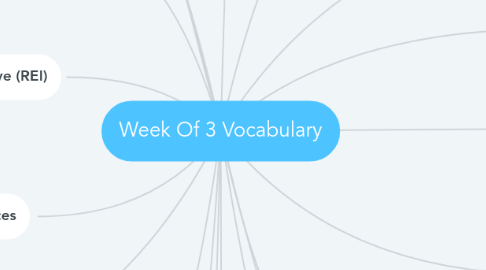Week Of 3 Vocabulary
by Ally Ellis

1. Developmentally delayed
1.1. Students have not developed at the average time a child should
2. ADHD
2.1. Psychiatric disorder with symptoms occurring before age seven that includes a pervasive and significant pattern of inattention, impulsivity, and/or hyperactivity–impulsivity. It is not included as a disabled category it can be considered if a child has it severe enough and it then would be included in Other Health Impaired. ADHD can really affect the way a student is able to learn in the classroom. It is not put into a disabled category but if a student is have severe issues with it in the classroom they will be put into some classes to help that student
3. At Risk
3.1. These students may be homeless, abuse drugs or other substances, live in poverty, or have any of hundreds of other characteristics that can negatively affect their learning.
4. 4 strategies to Encourage Parent Participation
4.1. 1. Use family Centered practices, emphasize the family’s strength. 2. Respect the unique characteristic of each family member. Ask the family if they need any help and just because you learned about there culture does not mean you know how their family works. 3. Recognize that the family has a different understanding of what the child’s needs are and they might be different from what you believe 4. Try to match your strategies and resources to the family’s preference
5. Regular education Initiative (REI)
5.1. -urging general education and special education teachers to work together to educate all their students
6. Evidence Based Practices
6.1. This means that they must make decisions about what to teach their students and determine how effective that teaching/learning process has been based on data that they gather. They also must teach, using programs, interventions, strategies, and activities that have been demonstrated through research to be effective
7. Differentiation
7.1. Modifying curriculum and other services to meet specific needs of individual learners. Differentiation often includes changes made to the content being taught (e.g., more, less, alternative), the process being used to teach it (e.g., visuals versus words), and the ways students demonstrate they have learned it (e.g., a test versus a multimedia presentation).
8. Assistive Technology
8.1. Devices and services that improve the functional capabilities of students with disabilities.
9. Direct Instruction
9.1. A comprehensive, highly structured, teacher-led instructional approach that emphasizes maximizing not only the quantity of instruction students receive but also the quality.
10. Strategy Instruction
10.1. Method of teaching students’ techniques, principles, or rules applicable in many learning situations that guide them to complete tasks independently.
11. Giftedness
11.1. Students who have skills and talents in certain areas, they have natural abilities when it comes to certain areas which could include, math, reading, ext. Many schools do not have programs for gifted students.
12. Prevalence
12.1. To determine prevalence of students of disabilities the US Department of education conducts and gathers information which is included in IDEA.
13. Barriers to Parent Participation
13.1. Many factors contribute to some parents’ reluctance to participate actively in their children’s education. For example, time is a critical issue for many parents.
14. Inclusion
14.1. Belief system shared by every member of a school as a learning community, often based on a mission statement or vision, emphasizing the commitment to educate all students so they can reach their potential.
15. Collaboration
15.1. Style for direct interaction between at least two coequal parties voluntarily engaged in shared decision making as they work toward a common goal.
16. Universal Design For Learning
16.1. Based on concepts from architecture and product development, an approach for teaching and learning emphasizing the need to address in instructional planning the entire diversity of student needs.
17. Response to intervention
17.1. Approach (first authorized in IDEA 2004) to identifying students as having learning disabilities based on the extent to which their learning accelerates or fails to accelerate when provided with increasingly intense instructional interventions.
18. Positive behavior Supports
18.1. A functional and data-based approach to responding to student behaviors with an emphasis on skill development. student who pushes others, professionals would meet to analyze this serious problem, and once it was better understood, they might then try to prevent some of the student’s frustration by ensuring that the work the student was assigned was not too difficult
19. • What are the cognitive characteristics of individuals with learning disabilities?
19.1. 1. Attention: students have poor selective attention, become distracted easily
19.2. 2. Perception: Student is having a hard time understanding what they have seen or heard and they do not act on it
19.3. 3. Memory: students having problems with there short term and longterm memory
19.4. 4. Thinking/process: Have difficulty taking new information and processing it
20. • What are the academic characteristics of individuals with learning disabilities? 1. Reading 2. Oral Language 3. Written Language Students struggle in phonological Awareness, oral fluency, comprehension, Dyslexia


